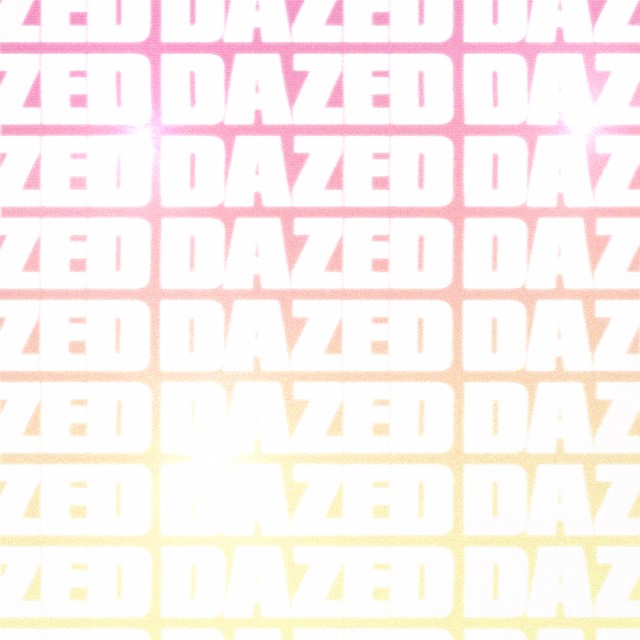A beauty influencer feud has galvanised the internet, but what does the backlash really stand for?
Earlier this month, YouTube beauty guru Tati Westbrook published the now-deleted ‘BYE SISTER…’, a 43-minute exposé of her former friend and mentee, internet personality James Charles. The video detailed his alleged betrayal of her, ‘I can do anything because I’m famous’ ego, and supposedly sexually coercive behaviour.
When the scandal broke I was lost over the details of the beef – something about hair vitamins? The apparent impropriety of talking about sucking dick at a birthday party? Trying to ‘convert’ straight boys? A bare-faced Charles posted a teary apology, and more videos followed from those involved in the situation, with ‘drama channels’ like Tea Spill weighing in with lengthy analyses. It was hard to keep up, but all I knew was that James Charles was, as they say, done out ‘ere.
This Saturday, Charles uploaded ‘No More Lies’, a 41-minute long response to the drama which not only seemed to show that any allegations of impropriety and sexual harassment made against him were false, but that they were deliberately manufactured by those who knew the facts and twisted them. Westbrook’s videos – where she perfectly walked a line between restrained hurt, anger, and genuine teary-eyed emotion – were award-worthy, but whatever your opinion on Charles, ‘No More Lies’ was a masterpiece.
An immaculate rebuttal of gladiatorial, Olivia Pope proportions, Charles (back in his trademark full face) sifted through receipt after receipt, carefully stripping away at accusations through a combination of iMessage screenshots, sociological analysis, and clips from Westbrook and other implicated figures that made you want to doodle their faces with a clown wig and makeup. After watching, I even had to subscribe.
If there was one thing I took away, though, it was just how alarming it was that a gay teenager had successfully been smeared as a sexual predator attempting to corrupt the ‘innocence’ of straight men. Charles had been accused by Westbrook of lobbying celebrity status to manipulate a heterosexual waiter, Sam, into sexual activity with him. Charles refuted this with unshakeable evidence, including testimony from Sam himself, that Sam had in fact hit him up on Instagram first, expressing his appreciation for Charles’s flirting, and later engaging in consensual kissing in a hotel room. Charles even felt forced to declare that it is not possible for him to have manipulated his celebrity to trick straight boys into sex with him, because he is in fact a virgin.
Charles’s misinformed internet trial goes so far beyond ‘cancel culture’ or a ‘mob mentality’, but shows just how deeply the age-old antagonistic archetype of ‘predatory gay man’ is ingrained in the cultural imagination, and how easily this homophobic trope can be activated to vilify LGBTQ+ people. In the UK, we saw these ‘predator’ stereotypes peak around the Aids crisis and when Section 28 was legislated in 1988 – the law that prevented the promotion of homosexuality in schools and local authorities reflected Conservative fears and disgust of LGBTQ people. In our current political climate this has been projected even more strongly on to trans and gender non-conforming people, as journalist Shon Faye articulates, referencing a campaign lobbying Girlguiding to overturn its trans inclusive policy due to the “risk” for cisgender girls.
This issue is complicated by Charles having been criticised for an apparent ‘obsession’ with straight boys, as evidenced by tweets saying “straight boys will be the death of me”, and backed up by singer Zara Larsson tweeting: “I’m cackling cause he hit up my boyfriend in the dms several times knowing damn well he’s straight” – even though there is no evidence to suggest Charles knew anything about model Brian Whittaker being her boyfriend, or that he was straight.
“Perpetuating myths of gay men forcing their sexuality on straight men erases instances where straight men sexually violate gay men”
The sexual dynamics of power between gay and straight men is quite a convoluted topic to unpack, as Charles himself conceded, but I think it’s necessary to make a few points.
The “several” DMs to Zara Larsson’s boyfriend were in fact one message telling him he’s “very hot.” This is hardly a sexual transgression, and since it seems that most of Charles’s unreciprocated expressions were at this level, it is interesting that there is an incredibly low bar for what is considered ‘harassment’ when it comes to gay men. As James Charles pointed out in his video, Larsson herself made far, far more explicit and sexual overtures towards Whittaker, publicly and to her millions of followers, before ever meeting him. But often just the presence of a gay man, the implication of his desire, need only disgust a straight man for it to be considered a sexual violation. How many of us gay men remember being in changing rooms at school, and accused of ogling at a boy’s six-pack? How many of us feel deep anxiety about ever accidentally revealing attraction to a straight boy in case we’re assaulted?
This is why painting Charles as a predator simply for being attracted to straight men is so dangerous – US states are only just beginning to legislate against the ‘gay panic defense’ which has been legally used to justify beating or murdering gay men who are claimed to have made straight men feel uncomfortable – even with no physical contact. The implications that gay men are sexually uncontrolled in the presence of other men has even allegedly led to a gay man in South Dakota being handed the death penalty, because jurors determined that an all-male prison environment would be too enjoyable for him. It is dangerous because perpetuating myths of gay men forcing their sexuality on straight men erases instances where straight men sexually violate gay men – which is relevant to note considering a recently published study which found that 70 per cent of LGBTQ+ people have experienced sexual harassment at work.
After Charles called out Larsson in his video for playing into a homophobic stereotype, she wrote a response implying that he should stay away from straight men, who will “never give consent.” Everything about that is laughable. Straight men, and men who are ostensibly straight men, chase gay men. They especially chase femme gay men. If I open Grindr at any one time, a sizeable portion of what I see are blacked out profiles of ‘straight men’ with bios noting that they are exclusively seeking femme guys. There are men who have sex with men (MSM for short) and identify as neither gay, bisexual nor queer – a concept most find difficult to grasp (as I learned after being aggressively trolled for tweeting this fact just a few months ago).
Larsson’s ignorance is even more cringeworthy when she instructs Charles to move away from straight men and focus on other gay men. As I’ve learned from femme and gender non-conforming friends, femmephobia within gay communities means that sexual and romantic attraction centres around masculine-presenting men which leaves femme men on the margins of desirability – they therefore more often find themselves attracting straight, curious and “down low” guys, rather than other gay-identifying men.
I worry for the young gay boys – many of whom will have found the YouTube beauty community to be a place of creativity, aspiration, and escape – who, having witnessed this drama, now feel that an erotic interest in straight men is inherently shameful and predatory. It isn’t. I have countless gay friends who recall consensually hooking up with straight boys on the rugby team at school – this dynamic is specifically about a complex relation to masculinity for both parties, and while this never excuses sexually forceful or manipulative behaviour from either, it is a relationship that exists, but is often hidden, not articulated successfully if at all.
To be clear, I’m sure that Charles has, at some point, crossed boundaries – his messages to other boys are certainly very forward, for which he’s apologised and insists he’s learned his lesson. But here it feels important to mention the total lack of LGBTQ+ sex and relationship education on offer from schools and families. Limited access to sex and relationships guidance forces LGBTQ+ people to learn on the job – how do you expect a sexually curious 19-year old boy to behave and explore their sexual energy, when there is no framework or guidance provided to teach young gay boys how to appropriately interact and flirt with other men? How are LGBTQ+ young people supposed to react when “sliding in the DMs” with a compliment is generally considered harmless, but suddenly problematic when a gay guy does it?
Putting these questions aside, what this whole saga demonstrates is just how successfully homophobia blossoms once a gay man ostensibly commits a transgression. This event might be archived as a landmark internet pop culture moment, but the issues it raises are far bigger than Charles or any one individual. And while social media audiences will move on to the next scandal, I fear the long-term impact and cultural imprint this leaves for young gay boys who are still told that their desires make them deviant, and who, in their early sexual debuts, need patience and guidance, rather than disgust and confusion.
What I hope these boys take from Charles’s ending message in the video about his personal growth and developing sexuality maturity, is that sexual and romantic curiosity is no sin. You’re not alone in awkwardly stumbling through this romantic landscape of dating apps and eye emojis commented under instagram posts. Consent is non-negotiable and must always be prioritised and considered, but don’t be afraid to flirt with that hot guy, to have a crush, and to explore yourself sexually.




